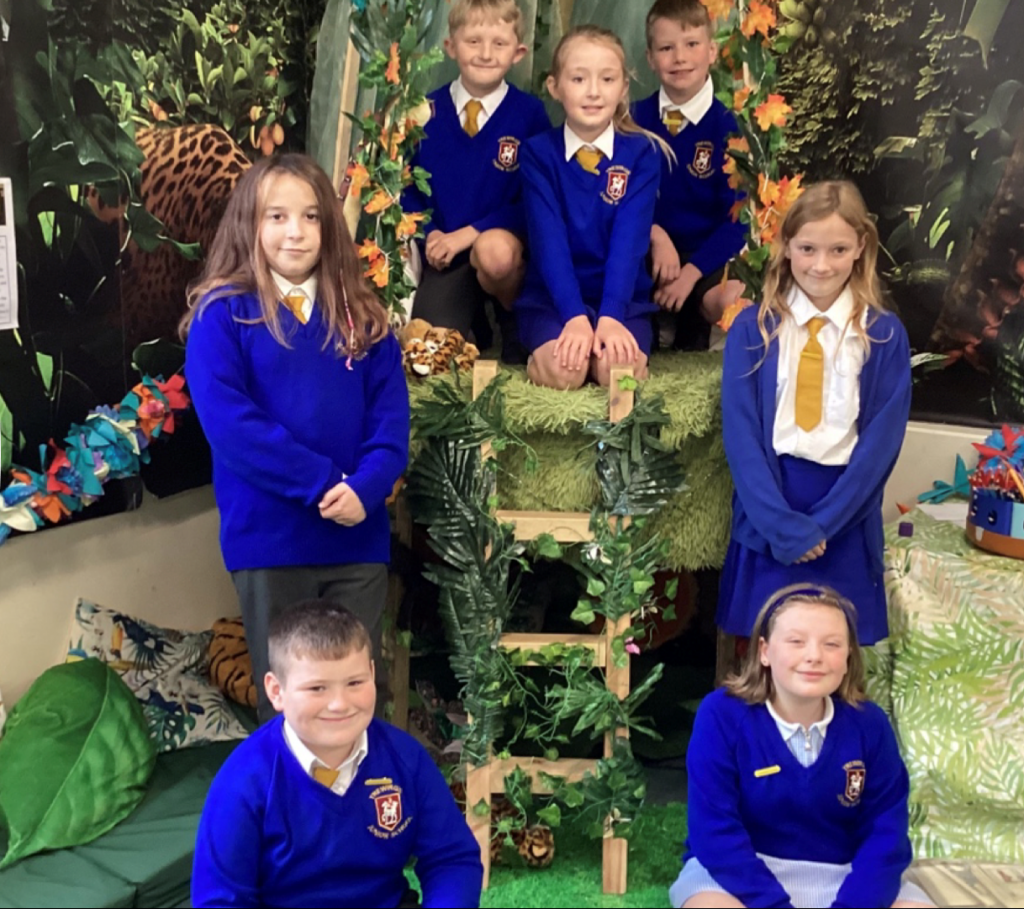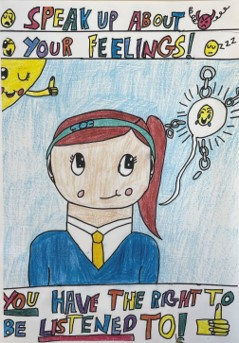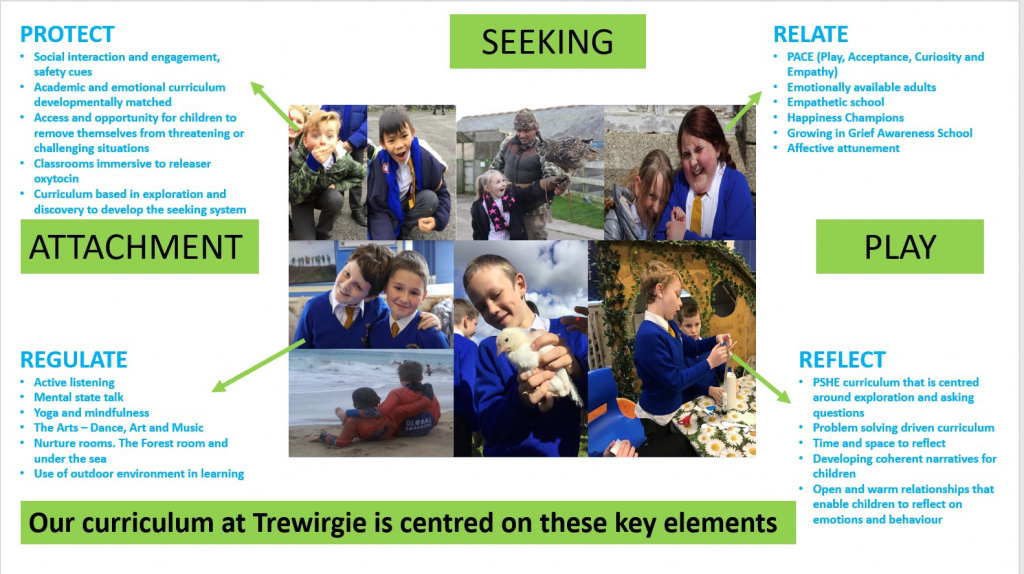
The future belongs to the curious. The ones who are not afraid to try it, explore it, poke at it, question it and then turn it inside out.” – Gayla Martindale
Each of my three headships has been in areas of significant deprivation, where life chances and aspirations for children have been limited, so I have been determined to create a school with an ethos, culture and curriculum that would enable every child to thrive.
Key to this strategy has been their resilience and wellbeing! and thus in turn has been promoted by a curriculum that encourages independent learning and knowing that it’s through mistakes that we learn the most!
We know that resilient children are often good at solving problems and learning new skills. This is because they’re more willing to try again even if things don’t go the way they want the first time.
When things don’t go well and children feel anxious, sad, disappointed, afraid or frustrated, resilience helps them understand that these uncomfortable emotions usually don’t last forever. They learn that they can experience these emotions and know they’ll be okay before too long.
We also know that resilient children are less likely to avoid problems or deal with them in unhealthy ways, like getting defensive or aggressive or intentionally hurting themselves. Resilient children are also likely to have better physical and mental health than children who struggle to be resilient.
A Resilience Enhancing Curriculum Is A Thinking Curriculum
They therefore need a learning environment and curriculum where making mistakes in their learning is celebrated, where learning gives them opportunities to challenge their thinking, be prepared to rethink their approaches, and recognise that not all learning is easy, or necessarily has a right answer.
This builds their ability to see things from a range of perspectives, persevere when things are challenging, and builds their resilience and ability to be positive in the face of adversity. (I will explore our curriculum in greater depth in a following article.)

You don’t have to obey the rules
However, our mission was seriously challenged by the Pandemic. When the pandemic first began back in 2020, we entered a world that we had not experienced before. For some children, they thrived, yet others journeyed on an entirely different path. From being confident and sociable, some children began to feel anxious, isolated and alone. They began to experience new feelings and emotions and didn’t always have the understanding, help, skills or support to be able to recognise what these emotions were, or the strategies to manage them.
Throughout the pandemic, schools became very different places too. Through a world of heightened anxiety, new rules and regulations, they changed the whole culture and face of schools. Sitting apart, afraid to have contact with one another. The freedom and joy of racing around together, laughter and fun, and playing collaboratively, was replaced with playing in isolation, sanitising everything they touched and experiencing increased feelings of anxiety. The normal and natural physical interactions that children were used to, were replaced with an awkward support at a distance. As adults, we understood why these changes had come in, but it went against everything we knew and believed in.
For the children themselves, it was like entering a bewildering period where so much changed. The result of this was, a shift in natural and easy friendships, an outpouring of unfamiliar emotions and a wariness of close interactions with one another.
We prioritised the learning environment and the need for children to interact with each other, despite the risk of transmission of the virus. So we ignored the DFE’s advice to make children sit in rows and face the front. Instead, we bought tabletop Perspex screens. These see-through screens, enabled us to continue to set up our children’s learning environment in just the same way we always had, facing one another. This approach meant that the children had good engagement with one another, good eye contact and interaction in their learning, which would play a critical part in supporting their return to good mental health.
When the school was selected for a Covid Health and Safety check at the end of the children’s first term, I was apprehensive about their view of our approach. I couldn’t have been more delighted though. Not only was the school given no action points whatsoever, but the inspector stated that our rooms were beautiful and was full of praise for the ingenious way we had found to support the children’s wellbeing.
Wellbeing And Pupil Voice at Trewirgie
Especially in an area of deprivation where inequality and adverse life chances are very evident, we have always believed that it is vital that children learn the importance of being able to speak out., so we provided children with real opportunities to do this.
Every term each class start their learning with an essential question. “Where is the safest place on Earth? This open-ended question enables the children to explore a real-life issue. What is it like if you live on a floodplain? How do you feel if your community and home have been washed away by a tsunami? What happens if you’re homeless, who helps you? How do you rebuild your community, your family, your life?
These topics have enabled the children to really begin to think about real-life issues that millions of people, both near and far are faced with and how, individually, and collectively, we can take action to help. These projects enable children to learn and believe that together, we can take a stance, we can champion a cause, raise awareness of this, and through this, learn to make a difference, have an impact and leave a legacy.
The pupils also have a genuine say in things that matter to them through the creation of Champion groups. As we began to emerge from the pandemic, it was evident that a great deal more help was needed for our children. What could our Happiness Champions do? How could they help the wellbeing of others? They became involved, with staff, in a wide range of things such as training on laughter yoga, and how this enables your body to release oxytocin into your system, the creation of a video to give children ideas and support on developing positive mental health, and the running of a Wellbeing club with mindfulness approaches and strategies.

The New Normal.
But the emergence from the pandemic was accompanied by a new and very difficult challenge – a cost-of-living crisis. This further exacerbated and highlighted the significant and additional support that our children, families and communities so desperately needed. By the autumn of 2022, many of our families were struggling to afford to feed themselves. We know that over time, if a child does not have enough food, it can affect or delay their development, put them at greater risk of chronic illnesses like asthma and anaemia, cause poor concentration in their learning, or be exhibited in range of ways such as hyperactivity, anxiety or aggression.
With more and more children within our community facing food poverty, and Redruth North being the third most deprived area in the whole county we needed to try to do something to address this. We made the decision to design and sell a community calendar. Armed with our calendars, with artwork from each class, our children went out into the community to tell the story of why buying one of these would make a real difference to others.
By the end of December, the children had managed to raise awareness of food poverty in our community but raised a massive £4300 to donate to the Camborne, Pool and Redruth foodbank. Through projects such as this, our children have begun to learn that they can have a voice, can take action and through this, begin to make a difference to the lives of others.
As we continue to live through the post-pandemic and cost of living crisis, it has become more and more apparent that the complexities of these periods continue to have a profound effect on many of our children and families. This post-pandemic period become more complex, more demanding and, at times, more bewildering. If the pandemic and cost of living crisis, taught us anything, it was that we needed to have a far greater understanding of ‘what lies within us’ and how this manifests itself.
As with many schools, we began to see a rise in anxiety, a greater struggle with reforming friendships, an increase in volatility and behaviour, and a lessening of children’s ability to be resilient. All of these, and many more, meant that children were not able to thrive.
Alongside this, we moved into a period where services were folding, thresholds were becoming higher and higher, and waiting lists were so long that a child might have journeyed through our school before they could access the help they needed.
As our world was changing, we needed to change too. How could we replicate the external provision that was disappearing, or too hard to access? How could we build staff’s deeper understanding of the impact of the pandemic and the effect it had had on our children and families? How could we support our parents better? How could we reshape our curriculum so that it was even more focused on building greater resilience? How could we reshape our PSHE and personal development curriculum to address this? What approaches should we be using for dealing with children who were exhibiting anger, defiance low self-esteem or anxiety?
Raising Attainment Through Wellbeing
One of the decisions that we made was to expand the school’s wellbeing team. If we couldn’t access services from beyond the school, we would expand the team and their expertise to replicate this. We put in place an impressive team: A full-time school counsellor, a Wellbeing and pastoral lead for each year group, the school’s SENDCo and behaviour lead, and myself, as headteacher. Everyone within the team was a Trauma-informed practitioner and used these approaches with our very vulnerable children. What we now needed now though, was this to be much wider.
We then came across the Raising Attainment through Wellbeing programme. Instantly we knew that this was the perfect program to engage in. What this offered was something that fitted with our own philosophy of education by placing children’s wellbeing at the heart of the school and looking at strategies and approaches to ensure that through this, we continued to enable every child to thrive.
We recognised that this program would enable the staff to understand what was ‘underneath the surface’ at a much deeper level which would, then enable us further to amend and adapt our curriculum and approaches.
Having researched the program before we signed up, we could see that it had such an abundance of high-quality training material, research and, most importantly, access to an amazing coach who would help us to shape the next stage of our school’s journey.
Jane Sargent
Executive Leader
Trewirgie Junior School
RAW – Raising Attainment With Wellbeing
If you would like to learn more about RAW please visit our landing page
Register for free
No Credit Card required
- Register for free
- Free TeachingTimes Report every month